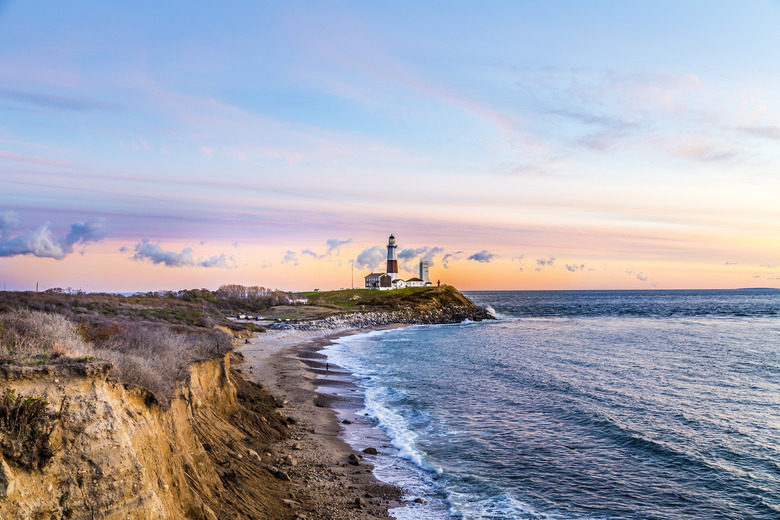Facts On The Atlantic Coastal Plains
The Atlantic Coastal plains stretch from parts of Massachusetts and New York in the north to the Florida Keys in the south, covering more than 2,200 miles along the Atlantic Coast of North America and extending up to 62 miles inland. Ocean sea levels affect this low-lying region, as well as the water table beneath the states that line the coast. It's an important ecological resource. Conservation International of the North Atlantic Coastal Plain recently included this region as a global diversity hotspot, a step forward in protecting the vulnerable ecosystems within the area.
TL;DR (Too Long; Didn't Read)
Areas that receive a Biological Diversity Hotspot designation generally have more than 1,500 native vascular plants, vegetation with tissues that conduct water, sap and nutrients, under threat of extinction. Rising sea levels and rains that wash heavy sediment and silt into these low-lying marshes and tidal basins pose a significant threat to the plant and animal life that make their homes there.
Vulnerable Water Supplies
Vulnerable Water Supplies
Groundwater resources along the Coastal Plain are under threat of contamination as the level of the sea rises and salty ocean water intrudes inland along the tidal marshes, rivers and streams that flow east to the sea from land. In 1989, for example, county leaders ordered the construction of the Manasquan Reservoir in New Jersey to supplement the declining ground-water supplies because of saltwater intrusion in parts of Ocean, Middlesex and Monmouth counties. Groundwater supplies along the coast in Florida, Georgia, the Carolinas, Virginia, Delaware, New York and Massachusetts are also vulnerable.
Threatened Ecosystems
Threatened Ecosystems
Inland and coastal wetlands remain an ecological resource for shorebirds, wading birds, waterfowl and other aquatic species that call these regions home. Industrial and urban development between 1954 and 1978 severely impacted the region, with many salt marshes disappearing during this time and the over the last 200 years. Inland tidal marshes still do not have the protections other ecosystems in the region do.
Diverse Plant Life
Diverse Plant Life
Endemic plants, vegetation that only grows in the area, are vulnerable with the rapid changes the region is undergoing. Forests dot some of the inland areas along the Atlantic Coast and serve as home to a variety of trees: hickory, long-leaf pines, sweet gum, magnolia and bay. The hardwood forests in the north include white, black, red, chestnut and scarlet oaks. You'll also find freshwater marshes, shrub bogs, white cedar swamps, nonalluvial wetlands and wet hammocks, estuaries, lagoons and sounds.
Animals of the Coastal Plains
Animals of the Coastal Plains
Animals of the region include multiple species of reptiles and amphibians such as frogs, salamanders and toads. It's also home to gray foxes, the Lower Keys marsh rabbit, manatees in the Florida Keys, multiple species of fish, including the threatened Alabama sturgeon and more. Waterfowl, wading birds and a variety of shorebirds make their home in the region.
References
Cite This Article
MLA
Brenner, Laurie. "Facts On The Atlantic Coastal Plains" sciencing.com, https://www.sciencing.com/atlantic-coastal-plains-8586597/. 11 April 2018.
APA
Brenner, Laurie. (2018, April 11). Facts On The Atlantic Coastal Plains. sciencing.com. Retrieved from https://www.sciencing.com/atlantic-coastal-plains-8586597/
Chicago
Brenner, Laurie. Facts On The Atlantic Coastal Plains last modified March 24, 2022. https://www.sciencing.com/atlantic-coastal-plains-8586597/
